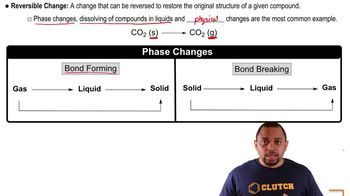Consider the following concentration–time data for the reaction of iodide ion and hypochlorite ion (OCl-). The products are chloride ion and hypoiodite ion (OI-).
(b) Determine the rate law, and calculate the value of the rate constant.




Consider the following concentration–time data for the reaction of iodide ion and hypochlorite ion (OCl-). The products are chloride ion and hypoiodite ion (OI-).
(b) Determine the rate law, and calculate the value of the rate constant.
Consider the following concentration–time data for the reaction of iodide ion and hypochlorite ion (OCl-). The products are chloride ion and hypoiodite ion (OI-).
(d) Propose a mechanism that is consistent with the rate law, and express the rate constant in terms of the rate constants for the elementary steps in your mechanism. (Hint: Transfer of an H+ ion between H2O and OCl- is a rapid reversible reaction.)
Consider the reversible, first-order interconversion of two molecules A and B: where kf = 3.0⨉10-3 s-1 is the rate constant for the forward reaction and kr = 1.0⨉10-3 s-1 is the rate constant for the reverse reaction. We'll see in Chapter 15 that a reaction does not go to completion but instead reaches a state of equilibrium with comparable concentrations of reactants and products if the rate constants kf and kr have comparable values.
(a) What are the rate laws for the forward and reverse reactions?
Consider the reversible, first-order interconversion of two molecules A and B: where kf = 3.0⨉10-3 s-1 is the rate constant for the forward reaction and kr = 1.0⨉10-3 s-1 is the rate constant for the reverse reaction. We'll see in Chapter 15 that a reaction does not go to completion but instead reaches a state of equilibrium with comparable concentrations of reactants and products if the rate constants kf and kr have comparable values.
(c) What are the relative concentrations of B and A when the rates of the forward and reverse reactions become equal?